Popular games for platform Odyssey
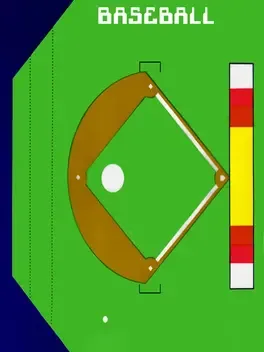
Baseball is a combined board-video game for the Magnavox Odyssey system that runs with its Cartridge No.3.
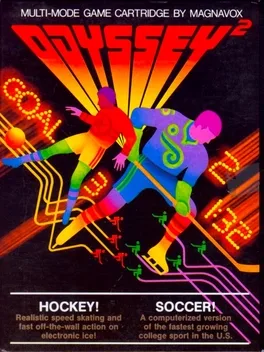
Replaced the game Football in the export versions of the Magnavox Odyssey in 1974. Used game cards #3 and #5

Type & Tell! lets the player type in a word or a message and then have the words spoken back to them by utilizing the Odyssey 2's voice module. The instruction manual suggests the following games that can be played: Garble! - Players take turns typing in one letter at a time, The idea is to form sentences by just using the sounds the individual letters make. Sound Waves! - Players type in random letters trying to create sounds that sound like something that could be heard in real life. Super Star! - Players can use the sounds or dialogue the game makes in their own home movie or radio show. War of Words! - This game requires at least two players. Player take turns typing in words until a sentence is created by one of the players adding a period. Players then take turns inserting words into the sentence, while trying to keep it grammatically correct. The first player to extend the sentence exactly to the end of the available typing space is the winner. If a player extends the sentence beyond the end of that available space, they lose.
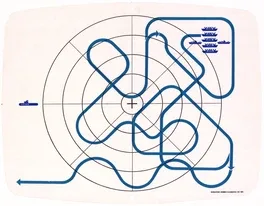
Submarine is one of the 12 original games that were shipped with the Magnavox Odyssey system. It runs on Cartridge No.5.
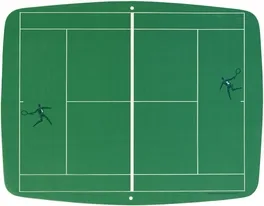
Haunted House is one of the 12 original games that were shipped with the Magnavox Odyssey system. It runs on Cartridge No.3 and uses an overlay.
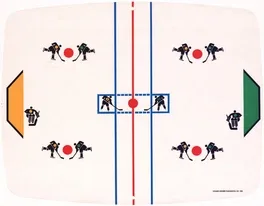
Hockey is one of the 12 original games that were shipped with the Magnavox Odyssey system. It runs on Cartridge No.3 and uses a stadium scoreboard with an overlay.

Extra games released for the Magnavox Odyssey in 1972. Came in a six pack with Wipeout, Volleyball, Fun Zoo, Invasion and Baseball. Could be bought separately. Worked with Cartridge #8.
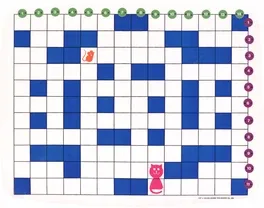
Cat and Mouse is one of the 12 original games that were shipped with the Magnavox Odyssey system. It runs on Cartridge No.4 and uses stick on numbers.

One of four games packed with Shooting Gallery, a Magnavox Odyssey peripheral. One player sets their dot on overlays of prehistoric animals, while the other player attempts to shoot the dot with the light gun in as few shots as possible. Uses game card number 9.

Ski is one of the 12 original games that were shipped with the Magnavox Odyssey system. It runs on Cartridge No.2 and uses stick on ski markers with an overlay.

Simon Says is one of the 12 original games that was shipped with the Magnavox Odyssey system. It runs on Cartridge No.2 and uses cards with an overlay.
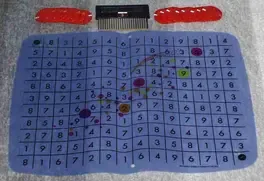
Analogic is one of the 12 original games that were shipped with the Magnavox Odyssey system. It runs on Cartridge No.3 and uses play-chips with an overlay. A math game where players can move to either squares depicted on the overlay based on if the number on the square is even or odd and is the sum of the other player's move and another number
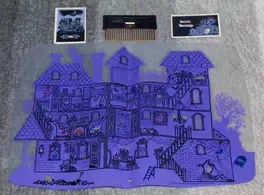
Haunted House is one of the 12 original games that were shipped with the Magnavox Odyssey system. It runs on Cartridge No.4 and uses clue cards with an overlay.
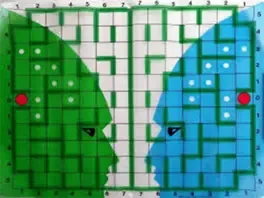
In Brain wave you must shoot down the invaders and dodge the incoming. Use dice to decide the next move.Watch out for falling air craft because it can kill you just as quick as the gun fire can. This game forces you to think and of course take a chance.

Magnavox Odyssey launch title, sold separately. A racing game using both a track overlay and a game board; the game board keeps track of laps and the second player's dot along with the ball dot keeps time. Uses game card number 5.
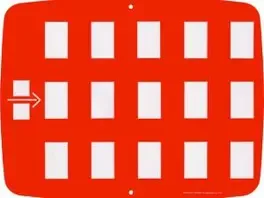
Percepts is the only known game that Magnavox gave away for free. When you purchased the Magnavox Odyssey in 1972 you could get a free game from Magnavox if you registered the purchase by mailing the "free bonus game" coupon to them. Worked with Cartridge #2.

Moto-Crash + is a motorcycle racing game. The goal is to drive as far as possible within the time limit of three minutes. The game features 4 predefined circuits (selected with the keys 1 to 4 at the start of the game) plus one random circuit generated by the computer (selected with the 0 key). The conditions of each circuit change as the player progresses. The race starts during daytime; once the player drives 6 km the night falls; at 10 km, the road becomes wet; at 20 km, the road becomes snowy and at 30 km the road becomes icy. Changes in weather conditions are not only accompanied by graphical changes but also gameplay ones, as the motorcycle's adherence to the road changes. If the player drives 6 km in daytime or 4 km in nighttime in any weather condition without crashing the computer awards him or her a bonus time.

Extra game released for the Odyssey in 1973. Came in a pack of six with Interplanetary Voyage , Brain Wave, Win, Wipeout, and Volleyball. Worked with Cartridge #8

You play a miner named Pickaxe Pete, and you start off in the middle of the screen with a pick-axe. There are three doors from which boulders are coming, bouncing down the mine-shafts; every time Pete destroys one of these he gains 3 points, although the axe wears out after a while and disappears. When two boulders collide, they explode, and out comes either a pick-axe which floats to the bottom of the screen, a key which floats to the top, or nothing. If Pete has no axe, you can either jump over boulders (gaining him 1 point), or get to the bottom of the mine to retrieve a new axe (gaining a 5-point bonus). If he collects a key then he can enter the doors, which lead him to the next level.

States is one of the 12 original games that were shipped with the Magnavox Odyssey system. It runs on Cartridge No.6 and uses 50 state cards with a study map.

Trans American Rally is a racing game released in 1983. It is avaliable only for the Odyssey Videopac +.
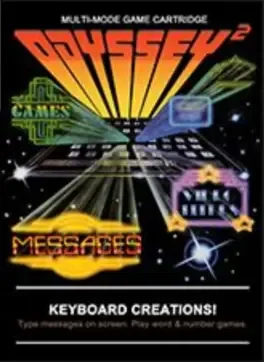
Keyboard Creations! lets the player type in a main message which will continually scroll across the screen. The game also lets the player set up an "alarm" message which can pop up every 30 seconds. The player can also set a digital clock to keep track of time.
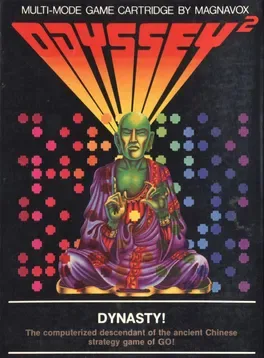
Press 0 on the alpha-numeric keyboard if you are playing on color TV. Press 2 if you are playing on Black and White TV. The game is played on an 8 x 8 matrix. Four "armies" in two different colors are at the center. A flashing question mark at the right hand side of the screen is asking if the "armies" of that color are to be played by a person or the computer. Press "yes" on the alpha-numeric keyboard for person. Press "no" for computer. If you have entered "yes," a second symbol will appear followed by a flashing question mark. If you wish that color played by a person, press "yes." If you want to play against the computer, press "no." If you have elected to play against the computer, the symbol for microprocessor will appear on the screen. If you are playing against another person, individual timers will appear separately at the top of the screen. Player one's timer will appear first. You can enter up to 99 minutes of time for each player in the game. Different times may be entered for each player to give a novice more of a chance against an experienced player. If you want to play with no time limit, enter 00 on the numeric section of the keyboard. If you are playing against the computer, the microprocessor will make its move instantly. It can make more than 100,000 electronic decisions per second. The object of the game is to occupy as much of the matrix as possible. The game begins with two "armies" of each color at the center of the matrix. The game ends when the board is filled or when neither player can enter a move and capture and opposing "army." The player with the most "armies" on the matrix is the winner. A running score appears at the top of the screen throughout the game. Every entry must satisfy two conditions: - An "army" must always be placed next to an opponents "army." - One or more of the opposing "armies" must be trapped by the newly entered "army" and another "army" of the same color. The trapped "armies" will automatically change to the conqueror's color. If these condition cannot be met, there will be an audio signal and the player loses a turn. Use the joy stick of the hand control to position the box on the screen where you want to locate an "army." Press the action button to enter the "army" onto the screen. Player one uses the left hand control. Player two uses the right hand control. Players may capture more than one army in different directions on the same move. The directions may be in any horizontal, vertical or diagonal straight line. Secret strategy hints. - The corners are the most important strategic positions. Once an "army" occupies a corner, it controls three directions. An "army" commanding a corner position cannot be captured because it cannot be surrounded on two sides in a straight line. - The outside positions of the matrix are very important because they effect five directions but are only vulnerable from two sides. - Caution! Be careful before occupying the first rows inside the perimeter of the matrix. They are jumping off points to the outside and corner positions. VERSION II: DIRECTIONAL DYNASTY Press 1 on the alpha-numeric keyboard if you are playing on color TV. Press 3 on the alpha-numeric keyboard if you are playing on Black and White TV. Enter player information and timer settings as per Dynasty rules 4 through 9. Directional Dynasty differs from Dynasty in only one way, but it changes the game completely. Players cannot capture "armies" in more than one direction on the same move. You must make a choice. When you enter an "army" into a position offering an option to capture "armies" in more than one direction, the surrounded "armies" will not change color automatically. Push the joy stick on the hand control towards the "army" or "armies" you wish to capture. A second positioning box will appear in that row. Press the action button and the surrounded "armies" in that row will change color automatically. It is very important to consider strategic position as well as the number of "armies" open to capture when exercising a directional option.
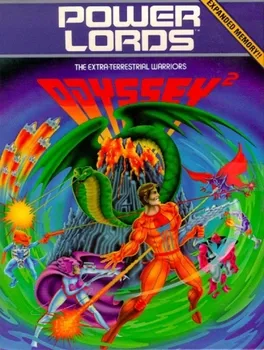
Power Lords is a game released for the Odyssey 2. It is based on the toy line from the 1980s that bears this name. To start the game, press 1 on the keyboard. You have just arrived at Volcan Rock - an artificial planetoid defended by a laser-eyed space serpent and other minions of the evil Extra-Terrestrial Alliance! Use the joystick of the right hand control to fly the space sled. Press the action button to fire your lasers. Warning! Your space sled can be destroyed by falling lava, rocks, contact with the space serpent's body or a blast from it laser eyes. Gryptogg, Raygoth and Arkus of the Extra-Terrestrial Alliance, will periodically open doors in the volcano to fire a gravitational ray. The higher your score, the stronger the artificial gravity fields will become and the more likely you will be drawn to your doom. Direct hits of your lasers will stun the space serpent and destroy falling rocks. You can defeat the gravitational ray by blasting the door in the volcano. SCORING: - Blasting lava during volcanic eruption: 3 points - Stunning the space serpent: 15 points - Hitting an open door: 45 points - Destroying lava rock: 75 points - Surviving a volcanic eruption: 1000 points The score of your current game appears at the lower right of your screen. The high score in a series of games will appear at the lower left of your screen. Two question marks request the initials of the high scoring player. The high scoring player enters his or her initials through the keyboard. The high score and the high scoring player's initials will remain on the screen until a higher score is achieved in succeeding games. To start a new scoring round press RESET and then press 1.